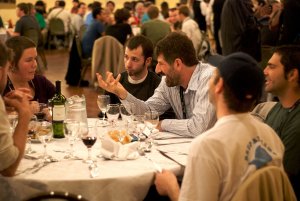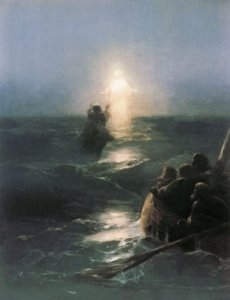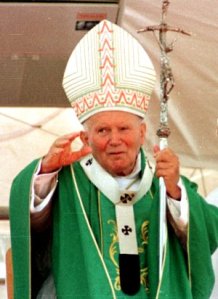
Two thousand years ago, several men set out in a small boat to cross the Sea of Galilee and ran into what they thought was a bit of bad luck, for their boat was not storm-worthy. What happened next became one of the most important stories of humanity’s history.
Though in his lifetime, Peter held no such position, the Catholic Church counts him as their first pope. After all, he had been given the name “Peter,” from the Greek for “rock,” because the founder of Christianity had said that upon this rock he would build his church. Sounds like something a cult leader would say. Some cult! Close to one third the population of Earth has been counted as members of that once tiny church.
Part of the story of Christianity is the miracles. Arguably, they were every bit as important as the self-sacrifice given to us by that founder. Why? They were not meant as a PR trick to dazzle the masses, though perhaps they did have that effect at times. They were meant as an inspiration for us to change our point-of-view.
I’m not talking about cult mental programming, here. I’m talking about moving the center of consciousness from the false, mortal self to the true, immortal self. And what the heck does that mean? Glad you asked. Humans have a dual identity, sort of like Clark Kent and Superman, only better. Genesis 1:26 says that Man was created in God’s image. If the image of God is that of a non-physical, spiritual and immortal source of creation, then we are inherently non-physical, spiritual and immortal sources of creation. Yep, baby gods! And even Jesus had to remind his enemies of this. It’s not an easy concept to swallow. They were about to stone the Nazarene for blasphemy, but reminding his enemies that the Bible says, “ye are gods,” stayed their hands.
Do we each have the ability to walk on the water?
Dual identity? So, where is this other part of Man? Genesis 2:7 says that Man was created again, but this time from the dust of the ground. Dust is primitive code for physical matter or ordinary chemicals. We’re talking about Homo sapiens, but that’s not the totality of this other part. The contrast is striking—a non-physical, immortal half and a very physical, mortal half. There is another physical component, though intangible, which is every bit as important as the physical body. This is the ego, the center of the false, mortal self, mentioned earlier. When you feel rage or fear, this is ego talking. Ego likes to be right, and feels injured if made to feel wrong. Ego is subject to the same laws of the physical realm obeyed by the physical body. Ego is vulnerable.
When someone lives in the spirit, they are viewing the world from the point-of-view of their true self—the invulnerable immortal. From this point-of-view springs such things as inspiration, true and full forgiveness, and the creation of what the uninitiated would call “miracles.” This point-of-view exists in the realm of creation.
An interesting parallel can be found in the world of computer programming. A bit of code cannot break the laws of the machine. A computer program cannot control devices to which it is not attached—say the apple sitting next to your keyboard. Oh, I guess a piece of fruit is not a device, not in the computer programming sense.
You can’t break the rules of the Matrix, unless your name is Neo, of course. In the second film of the Matrix trilogy, Neo finds that his powers of control extend outside of the Matrix. He manipulates not only the code of the Matrix computer program, but also the code of physical reality. He finds that he can bring down the enemy in the real world by thought alone.
No purely physical object can break the laws of physical reality. A cog in the machine cannot redesign the machine. Our physical bodies cannot create miracles. Only something superior to the physical can do such a thing. Only a child of God—a spiritual and immortal source of creation.

When Peter and his fellow disciples find themselves in a storm-tossed boat, they fear for their lives. Their mentor had remained behind to take care of some business, but when he shows up, they think they’re witnessing a ghost. Why? Because he is walking on water, and not just any water. It’s storm-tossed water.
The scientist who suggested that Jesus was walking on a block of ice must not believe that miracles are possible. Also, he did not read the story very carefully. It would be a miracle to push a block of ice across the sea toward the small boat, and another miracle to stay balanced on the slippery devil amidst the rocking waves. Plus, it would be an additional miracle to bring along another block of ice for Peter to step on. No, there was no ice. The miracle was walking on liquid water when the laws of physical reality say that such things are impossible.
Peter asked this ghost, “If you’re really our master, tell me to come out onto the water with you.”
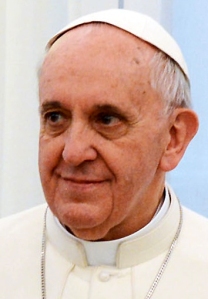
The reply, “Come,” left Peter with a momentary lapse in reasonable judgment. And that was a good thing. But don’t get me wrong. Reason is a good thing, too, within reason. The next moment, Peter stepped out of the small boat, and walked on water with his master. For that moment, his faith was complete. He was not living in the ego—the fearful, vulnerable self. He was outside of himself and in his true self—the fearless, invulnerable self.
Living in the ego is too familiar, too well practiced. It takes time, patience and persistence to cultivate living in the true self. Like a baby learning to walk, you pick yourself up and keep going.
Later, Jesus sent his followers out to perform miracles and to get others to perform miracles. It’s sad that so many people today feel such miracles are impossible or only for that ancient time, two thousand years ago. One Christian minister, on his website, advises that Jesus did not mean it literally when he said that we could do the miracles he did and even greater ones. Obviously, that minister has never created a miracle, otherwise he wouldn’t say such a thing.
Many people have created miracles, some every bit as awe inspiring as Peter walking on water, or Moses parting the sea. I speak from personal experience.
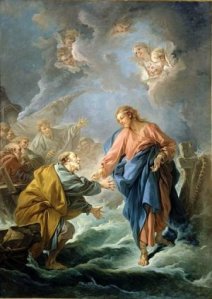
Creating is effortless. However, finding one’s self in the spirit is something that happens far too infrequently, for some of us. It takes practice. Abandoning reason can look like delusion, but it can also be transcendent. I’m not talking about the same thing. Delusion and being in the spirit are on opposite ends of a very broad spectrum. Despite their apparent similarities, they are worlds apart.
When Peter walked on water, he found himself in that other world—no longer viewing reality from the mortal ego, but from the immortal, true self. He created a miracle by his faith—a combination of perfect confidence and perfect humility (or subjugation of the ego). How many popes have ever achieved this? Perhaps only God knows. From all I’ve ever read, Peter was the only pope to have walked on water. Perhaps it is time that changed.
How can anyone walk on the water? How are miracles possible? Any ideas?
This article was published earlier as “How Many Popes have Shown They Can Walk on the Water?” 2013:0616 on https://www.the-love-of-god.com/blog/ and originally published as “How Many Popes have Walked on Water?” 2010:0410 on Blog.AncientSuns.com




